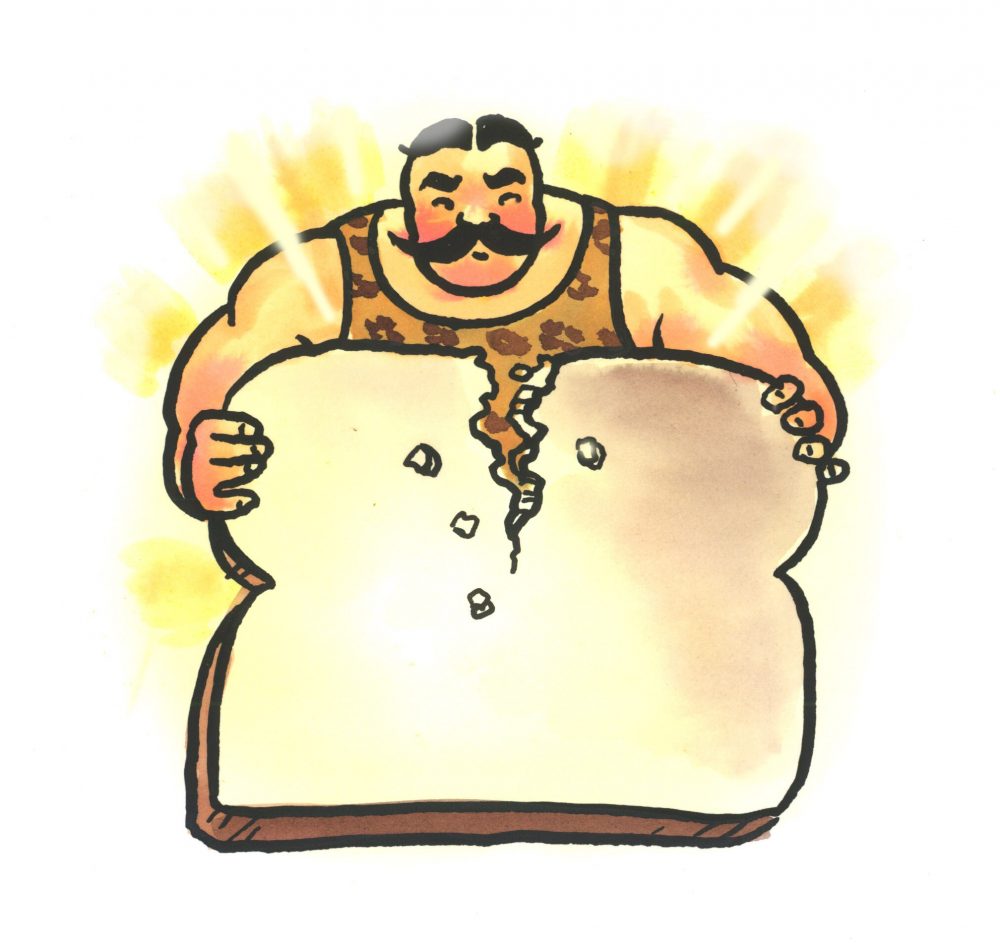
Rising to the Occasion
Yeast varieties and labels can be confusing. Patricia Hughey, of Philadelphia, wondered about the difference between regular active yeast and instant yeast, and how to go about substituting one type for the other.
Regular active yeast needs to be activated—or proofed—before use, since it tends to have a lot of dead cells around the outside of the yeast granules. The proofing is done by dissolving it in warm water; a typical ¼-ounce packet of yeast should be dissolved in ¼ cup of 100°F to 115°F water for about 10 minutes. If the mixture bubbles, the yeast is viable and ready to be used in your recipe. Instant yeast (also called rapid-rise, fast-acting or bread machine yeast) is more potent and doesn’t require proofing. It can be added directly to dough ingredients during the mixing. Active dry and instant yeasts can be substituted one for one. Just keep in mind that active yeast is slower than instant when it comes to dough rising, but will eventually rise just as much as instant yeast by the end of a long rise (2 to 3 hours). For recipes that call for a shorter rise, dough made with active yeast might require an extra 15 or 20 minutes to double in size. And regardless of the variety of yeast, it’s always best to refrigerate it; it’s a living organism that can expire.
One Bay at a Time
After watching a friend cook with fresh bay leaves plucked from the tree growing in his garden, Daniel Moerman, of Ann Arbor, Michigan, wondered whether there is a meaningful difference between fresh and dried bay leaves, as well as whether the variety matters when it comes to bay leaves’ flavor.
To sort this out, we compared three types of bay leaves: fresh bay laurel (the variety typically found in plastic containers in the produce section of the supermarket), dried Turkish bay (a type commonly sold jarred in the spice aisle, along with dried California bay leaves) and dried Indian bay (in the U.S., available mostly at Indian grocery shops). We immediately noticed a difference in aroma. The dried Turkish bay had an earthy, peppery scent; the dried Indian bay smelled sweeter, with strong notes of cinnamon and clove; and the fresh bay was almost pungent, with notes of pine and mint. We then used each to season a batch of plain long-grain white rice, adding the bay to the cooking water. The dried Turkish bay lent a subtle peppery finish, while the Indian was more floral and delicate. The fresh bay was easily the most prominent, giving the rice a striking eucalyptus-like flavor. Turns out, drying weakens the flavorful and aromatic oils in bay. This merits care when cooking with fresh bay—too much can easily overpower a dish. If substituting fresh bay leaves for dried, use half what the recipe calls for (or use smaller leaves). And if you’re using them in long-cooking stews and soups, remove them midway through cooking to prevent the flavor from becoming too strong.
Looking for Shortcuts on the Breadcrumb Trail
Janet England, of Brighton, Massachusetts, expressed frustration that many recipes calling for breadcrumbs don’t specify variety. She wanted to know the difference between fresh breadcrumbs, dried breadcrumbs and Japanese-style panko, and whether there might be a one-size-fits-all solution for using them.
Fresh breadcrumbs are exactly what they sound like—fresh or lightly stale bread ground to fine crumbs. They are an excellent binder in meatballs, retaining moisture and creating a delicate texture. Dried breadcrumbs—particularly purchased—have a fine, powdery texture and have been completely dehydrated. They are good for adding texture, to coatings and toppings. Japanese panko breadcrumbs are dry, coarse and fluffy. The variety of panko most common in the U.S. is made from crustless white bread. It is larger than standard dried breadcrumbs and has a lighter, crunchier texture. It is our go-to all-purpose breadcrumb. Panko is unseasoned, making it versatile. And thanks to its larger crumb, it’s both crispier and sturdier. We use it to bread fish, chicken and crab cakes. We also sprinkle it over pasta to add crunch (toast it in a skillet first with a bit of olive oil). If a recipe calls for dry fine breadcrumbs, panko can be converted. Spread 2 cups panko on a rimmed baking sheet and toast in a 325°F oven until light golden brown (12 to 15 minutes). Cool completely before grinding them until fine in a food processor (seasonings can be added, too). But panko is not a good substitute for fresh breadcrumbs; those are best made as needed (keep leftover bread and loaf ends in the freezer for this).




